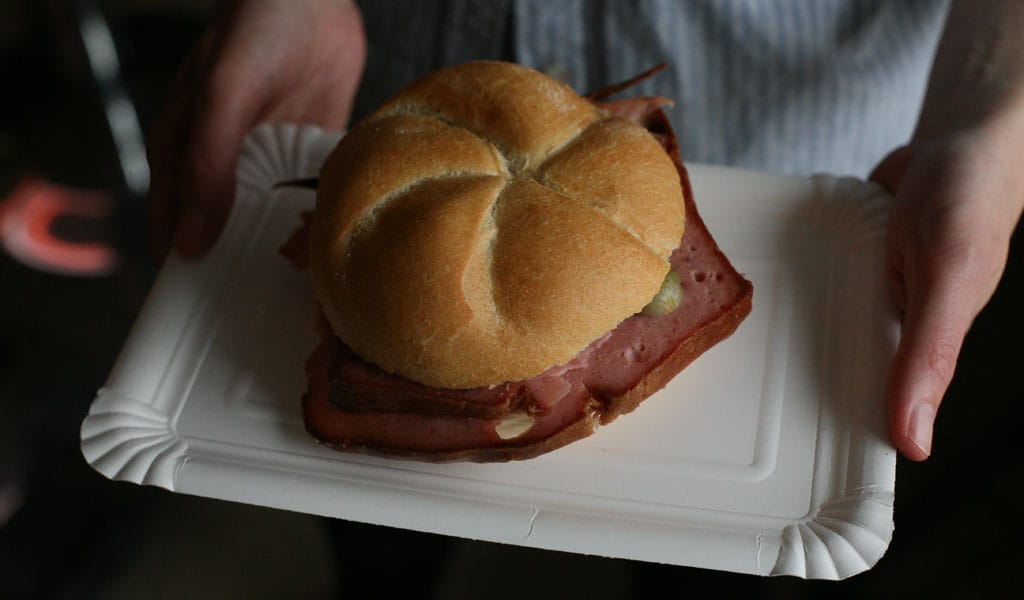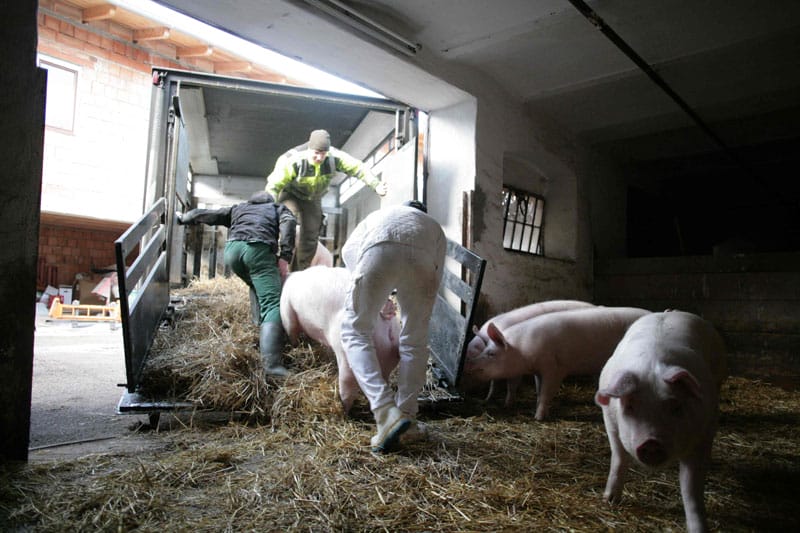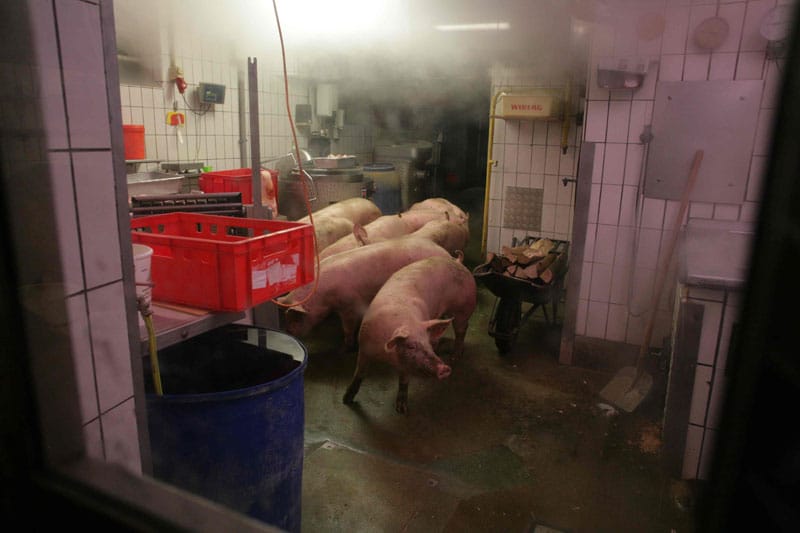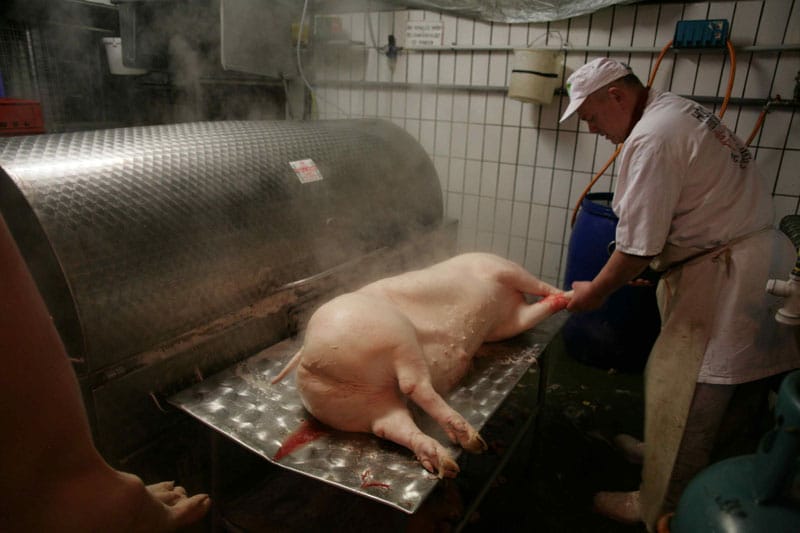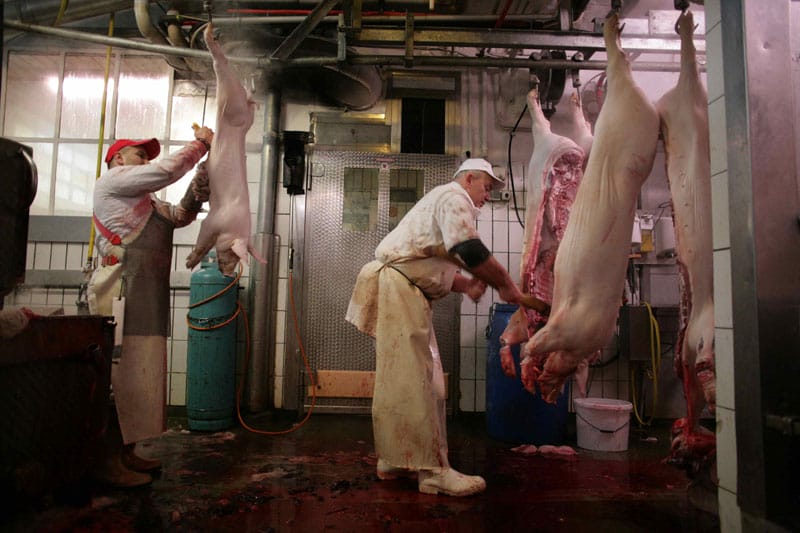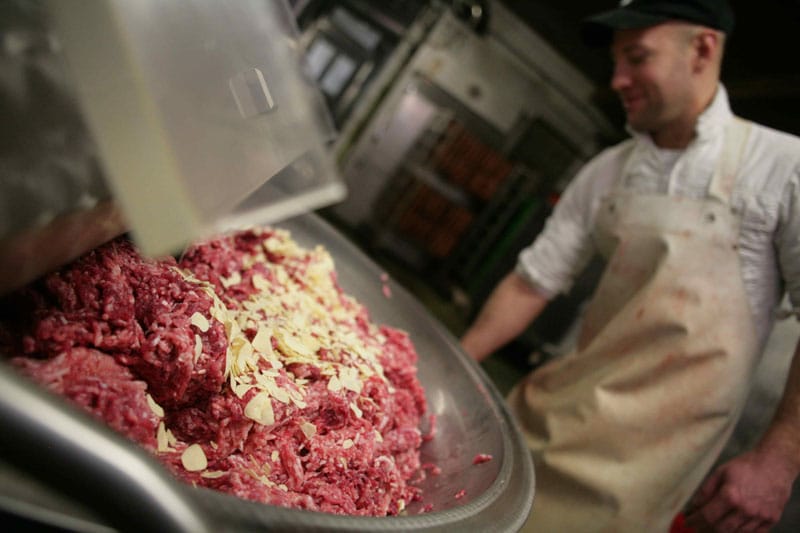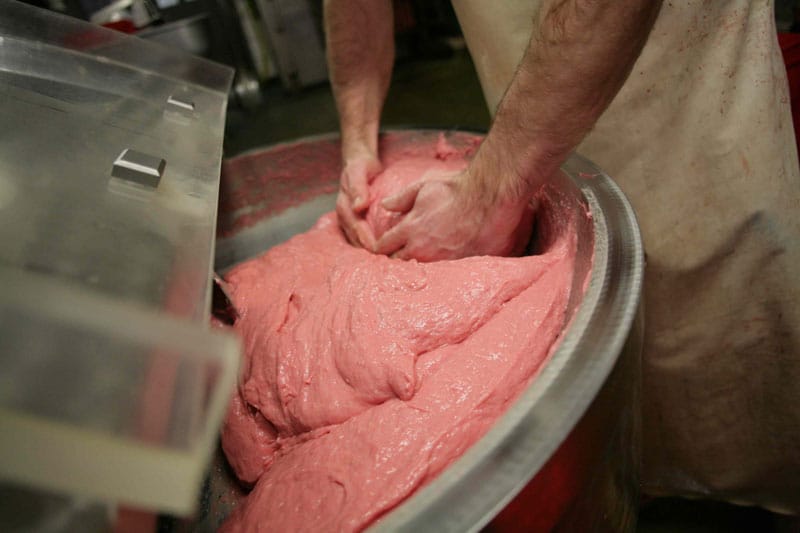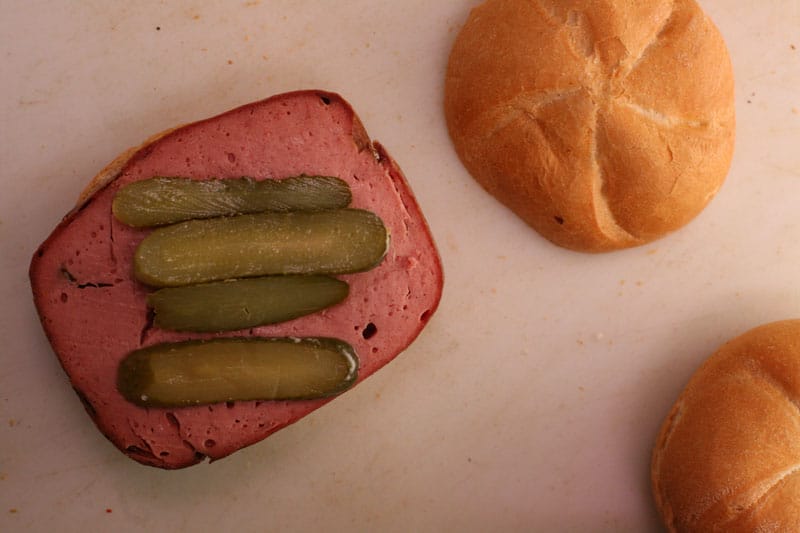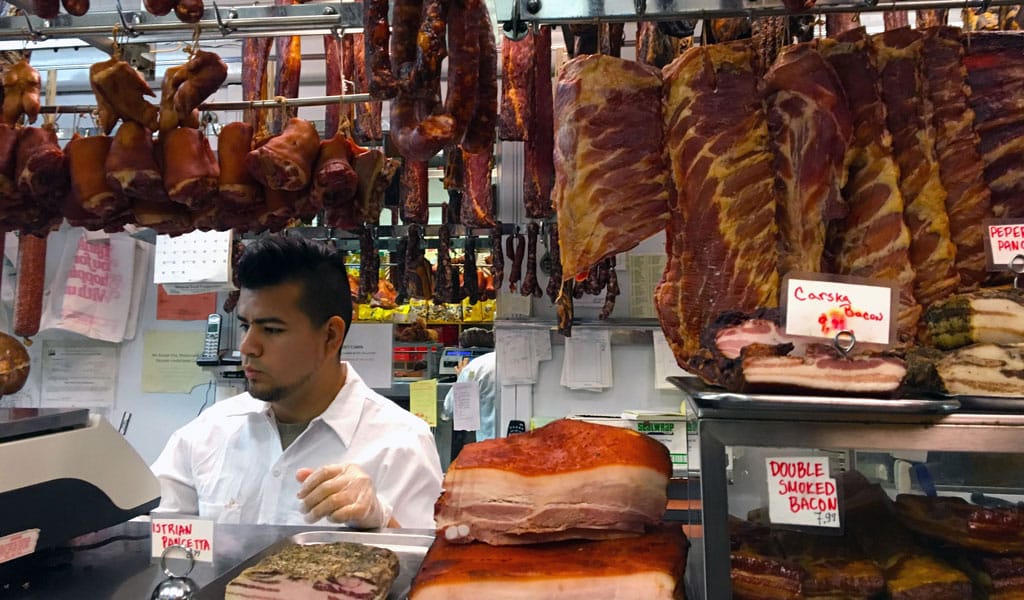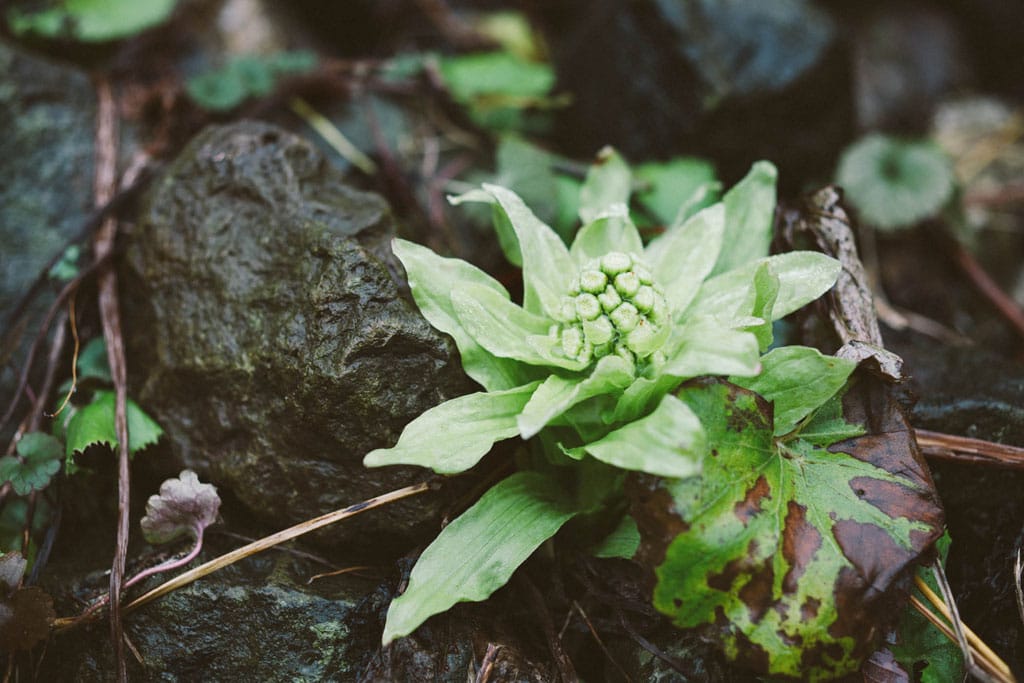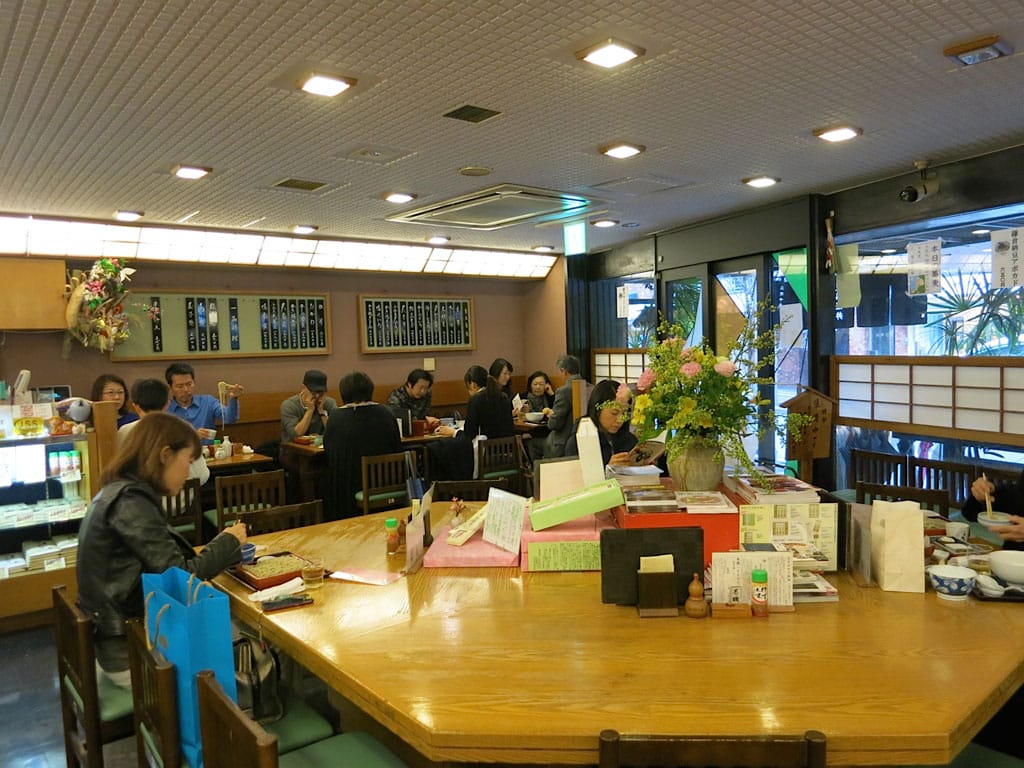What the taco stand is to Mexico City or the wok-wielding hawker to Bangkok, the Würstelstand is to Vienna. At any time of day or night, people line up to snack on a quick sausage, with a pickle, mustard and a can of beer.
There is an astonishing variety of sausages to choose from – from well-known Vienna sausage to Waldvierter, a twice-smoked sausage made from pig’s head, from spicy Burenwurst to Käsekrainer. The last one is for many locals the king of the Wurst: a coarse sausage filled with pockets of hot, melted cheese that ideally form a crispy crust on the outside once the sausage has been grilled.
One well-loved – but little known outside of Austria – snack is Leberkäse. The direct translation of the name is “liver cheese,” though it contains neither. It’s a type of finely minced meat loaf made from pork, beef or, for connoisseurs, horse, served in one thick slice and often on a white roll. It’s the working man’s breakfast, a cheap and amazingly satisfying lunch and a common savior after a night spent drinking.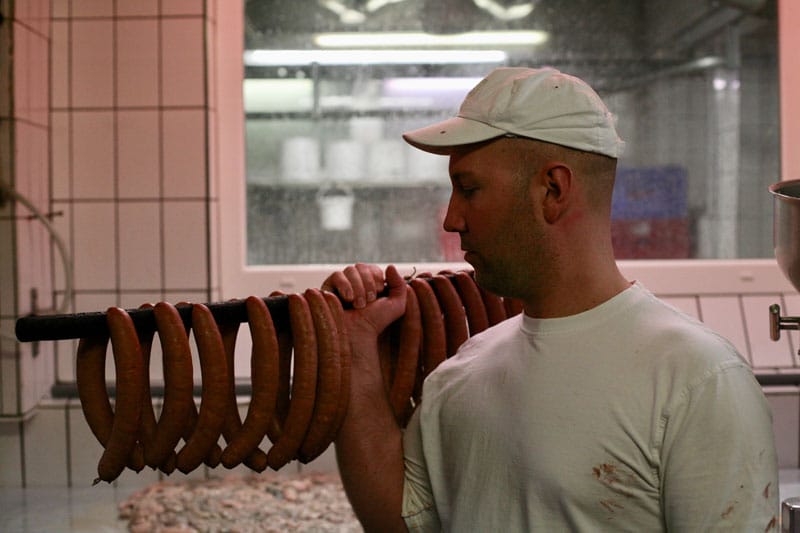 Every butcher in town used to produce its own sausages according to his own recipes – a butcher without sausages was impossible to imagine. The butcher didn’t live off selling steaks; only by turning the otherwise worthless off-cuts into something saleable could he turn a profit. Due to many factors, social, economic and otherwise, the once impressively varied offerings have, however, diminished somewhat in recent years. Most sausages and Leberkäse at the Würstelstand are produced by a handful of big companies. Vienna’s independent butchers are a dying breed.
Every butcher in town used to produce its own sausages according to his own recipes – a butcher without sausages was impossible to imagine. The butcher didn’t live off selling steaks; only by turning the otherwise worthless off-cuts into something saleable could he turn a profit. Due to many factors, social, economic and otherwise, the once impressively varied offerings have, however, diminished somewhat in recent years. Most sausages and Leberkäse at the Würstelstand are produced by a handful of big companies. Vienna’s independent butchers are a dying breed.
Since Austria joined the EU in 1995, many butchers have ceased to slaughter, simply because conforming to the rules and regulations is too difficult. Four big slaughterhouses do almost 70 percent of all slaughtering in the country, the 20 biggest more than 95 percent. Almost all of the 15 or so independent butchers left in Vienna buy their meat from these slaughterhouses and then process it. In this city of almost two million inhabitants, Fleischerei Hödl is the last to slaughter on-site. Christoph’s grandfather opened the shop in 1953, and the place still feels very much like it did so many decades ago.
Leberkäse is notorious – and often the subject of jokes – for having a mysterious list of ingredients, but Hödl was kind enough recently to let us in on the secret and show us the entire process – from picking up the pigs to slaughtering them to making Leberkäse from the meat – and to explain why it’s better do it that way.
Every butcher in Vienna used to produce its own sausages according to his own recipes – a butcher without sausages was impossible to imagine.
The Hödls process about 20 pigs, six cows and one steer and the occasional horse every week. The animals come from small farms on the periphery of the city. On the day we followed Hödl, we picked up six pigs from a Beisl, or pub, just outside the city, which happened to keep a couple of pigs nearby – a not unheard of practice in the countryside.
Hödl picks up his animals a day before the planned slaughter in order to allow them to recover from the journey and settle down. (The most stress-free version – slaughtering the animals directly in the pig pen or on the field – is not allowed, outside of own-use.) After the hour-long drive, the animals spend the remaining hours in a stall behind the butcher shop.
[Editor’s note: Some readers may find the following images of sausage making not to their taste.]
At 1:30 a.m. the Hödls’ work day begins. Five butchers work on slaughter day; these are friends who are paid on an hourly basis. According to Hödl, it’s very difficult to find butchers with the correct skills: most butchers have no idea about slaughtering – they spend their days portioning meat in supermarkets.
The pigs are herded into the slaughter room in groups of about ten. They get slaughtered two at a time: a butcher stuns one pig after another with a large stun gun; as soon as the animal falls to the floor, Hödl Senior cuts its throat. Amazingly, the remaining animals seem to care very little. Pigs are herd animals and feel more comfortable in a group than alone – even when the group gets slaughtered.
The pigs are bled, washed, gutted and their bristles removed. Then they’re split in half with an axe. The innards are carefully cleaned and cut up. Part of the large intestine is used to make blood sausage. Then the art of sausage making begins.
The two most important things for Leberkäse (or any Vienna-style sausage) are the right ratio of fat to meat and the proper emulsification of fat, meat and water. Depending upon what has just been slaughtered, the mixture/composition varies. The mixture must contain around 30 percent pork fat.
The off-cuts are used as quickly as possible in sausage making. When the meat is still warm, the pH is lower, which enables the ground meat, fat and water to bind with a better consistency. If you use cold meat you have to add phosphate. Hödl uses a little anyway, as a precaution, but only about a fifth of the amount you would use with cold meat. As a result, his Leberkäse has an astoundingly good fluffy consistency and is full of flavor.
The meat and fat are coarsely minced with garlic flakes, then minced extremely finely in a very large food processor with iced water into a fine mash – butcher’s dough. The consistency is perfect, says Hödl, when the dough makes webs between the fingers. And just like bread, the mixture needs to rest; the Leberkäse is baked first thing the next day. The process and recipe are very similar for a lot of sausages, the main differences being the seasoning, the cuts of meat used, and the cooking method: whether the sausage is boiled, smoked or baked.
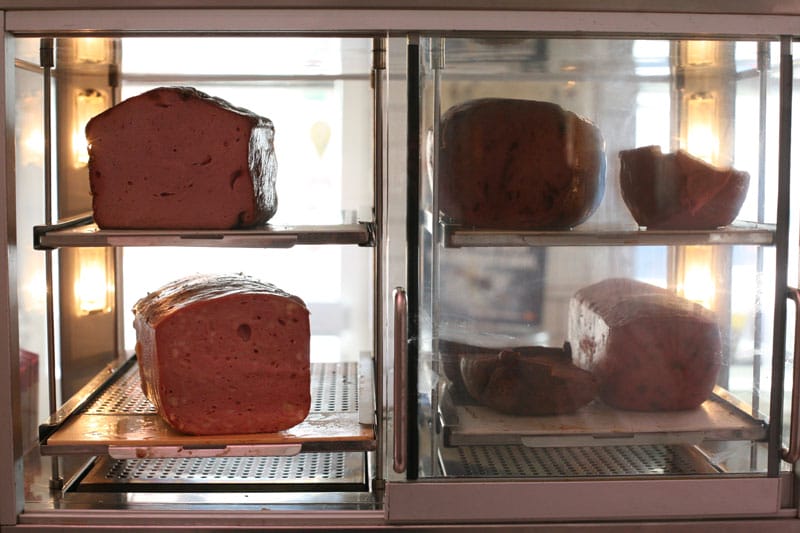
In about a year or two, Hödl senior will retire and Christoph will take over the business. He wants to continue slaughtering on site; he believes it’s the only way to ensure he gets meat only of the highest quality.
He’s pretty sure he’ll be the only one doing this for a long time to come. “It’s very expensive to build a licensed slaughterhouse,” he says, “and the authorities don’t really support new little ones. It’s difficult with the noise and the smell and the neighbors.”
The fate of the family business beyond Christoph’s tenure is unclear. A year ago, his first son was born. “I can’t force him to become a butcher,” he says, “but I will surely try to push him in this direction.”
If you want to sample the end product, you’ll find Hödl sausages at the following Würstelstände: next to the parliament building at Dr. Karl Renner Ring, in front of the Volksgarten, at the Schottentor, on Alser Straße, Krugerstraße and Südtirolerplatz. In August, the popular Würstelstand on Hoher Markt in the inner city will start serving them too. Or you can just visit the beautiful butcher shop, a bit of a detour off the main tourist track, but one well worth it.
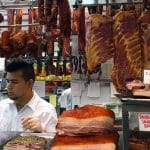 November 22, 2018 Muncan
November 22, 2018 Muncan
Getting ready for a recent New Year’s in Harlem, the Hungarian side of the family was […] Posted in Queens May 2, 2023 Spring Gone Wild
May 2, 2023 Spring Gone Wild
One of the great joys of spring in Japan is anticipating the appearance of sansai, or […] Posted in Tokyo July 15, 2021 Sarashina Horii Soba
July 15, 2021 Sarashina Horii Soba
How thrilling to know it’s possible to reach far back into Japan’s gastronomic past […] Posted in Tokyo
Tobias Mueller and Sarah KellyTobias Mueller
Published on June 02, 2017
Related stories
November 22, 2018
QueensGetting ready for a recent New Year’s in Harlem, the Hungarian side of the family was craving a traditional pot of lentils that needed a hunk of smoked pork knuckle. Where to find one with the right flavor in New York City? After some calls and searching, we headed out to Muncan Food Corporation. The…
May 2, 2023
TokyoOne of the great joys of spring in Japan is anticipating the appearance of sansai, or mountain vegetables. When cherry blossoms begin to flutter on warming breezes, hikers take to the hills to forage for the first wild edibles. Supermarkets mount special displays of packaged (and unfortunately often hot-house-raised) young sprouted leaves, shoots and tubers.…
July 15, 2021
TokyoHow thrilling to know it’s possible to reach far back into Japan’s gastronomic past merely by visiting Azabu Juban’s Sarashina Horii Soba for a bit of “living history” in the form of a pleasantly simple meal. The Sarashina cooking lineage stretches back over 200 years and is always evident in the shimmering, high-quality plates of…







































